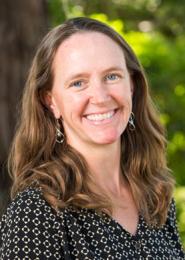July 5-18, 2025
Off campus 14-day overnight field program with Alison O'Dowd, Cal Poly Humboldt Professor
During this action-packed 14-day field course, students will learn about the natural history of the Klamath Basin while studying its socio-ecological systems and working on restoration projects in the Basin. Hike to high alpine lakes, raft the mid-Klamath River, snorkel in Klamath tributaries, visit Klamath River dams, and camp throughout the Basin.
This course is an interdisciplinary synthesis of topics concerning restoration, ecology and natural history within the Klamath River Basin. Students that successfully complete this course will receive 3 units of ESM 469 from Cal Poly Humboldt. This course is open to students from any University. This course can serve as a substitution for several courses at Humboldt including, but not limited to, ESM 355 (Principles of Ecological Restoration), BIOL 306 (California Natural History), or an upper division elective requirement.
The Klamath River flows 253 miles from Southern Oregon to the California coast, draining a basin of more than 15,000 square miles. The Klamath River was once the third most productive salmon and steelhead river in the West, surpassed only by the Columbia and the Sacramento Rivers. With a long history of impact and over-allocated resources, the Klamath Basin faces numerous water quality and quantity challenges.
The Klamath River Basin is an ideal location to study restoration, ecology, and natural history because of the expansive diversity in habitat types, hydrology, geology, ecology, vegetative communities, land ownership, and land use. Numerous restoration projects within the Klamath Basin incorporate all of these themes in one way or another. One restoration project of particular focus in this course will be the upcoming removal of four large dams on the mainstem Klamath River, which is scheduled to begin in 2023 and will be the largest dam removal project in history.
We will explore the California portion of this Klamath Basin through hiking, rafting, snorkeling and driving. We will visit Iron Gate Dam and reservoir, high alpine lakes, deep clear pools of the Salmon River via snorkel and mask, and experience the Klamath River first-hand as we raft down the mid-Klamath region. Throughout our exploration of the Basin, we will learn about principles of restoration, ecology, and natural history as we meet with representatives from local nonprofit organizations, government agencies, and Native tribes.
Following this program, students should have a working knowledge of and experience in:
- The variety of restoration projects in the Klamath Basin and how and why they are implemented.
- The components of the rich and diverse ecosystems that comprise the Klamath River Basin, both terrestrial and aquatic.
- Field observation skills, including methods for documenting and sharing findings, primarily focused on restoration monitoring and natural history observations.
- Critical reading, discussion, and evaluation of primary literature in ecology and restoration.
- Exploration of the unique natural history and geology of the Klamath Basin.
- The significance and history of Native tribes in Klamath related to the dams and other impacts.
- The array of employment opportunities related to watershed restoration and natural resource science through our meetings with different entities.
- Basic ecological, management and conservation concepts as related to the Klamath River Basin.
DOWNLOAD THE SYLLABUS (PDF file: requires Adobe Acrobat Reader.)
Prerequisites: No prerequisite is required, but the successful completion of an introductory environmental science/studies, geography, Biology, botany, ecology, recreation or related course is highly recommended.
The 2025 application for this course will open in late November. Please check back!
Faculty

Alison O'Dowd
Alison O'Dowd (e-mail) is the co-director of the Humboldt River Institute and a professor in the Department of Environmental Science and Management at Cal Poly Humboldt. Dr. O'Dowd's research interests are in aquatic ecology and restoration ecology of freshwater systems. Her research explores how biological stream communities (primarily benthic macroinvertebrates) respond to disturbance within a watershed. Dr. O'Dowd has taught field courses in French Polynesia, Costa Rica, the Sierra Nevada mountains, and the Cascades in Oregon.
Email Alison O'Dowd if you would like to be added to the mailing list to receive updates and announcements about the course.




